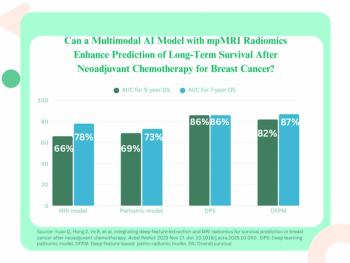
Large-bore 9.4T scanner begins operating at University of Illinois
The MR community has a new king of the hill. The University of Illinois at Chicago on Sept. 21 began operating a 9.4T MR scanner. The scanner, the most powerful such machine in the world for human studies, reveals not only anatomy but metabolism.The custom-built scanner will help make UIC’s new Center for Magnetic Resonance Research a premier international center for human brain research, according to center director Dr. Keith Thulborn.
The MR community has a new king of the hill. The University of Illinois at Chicago on Sept. 21 began operating a 9.4T MR scanner. The scanner, the most powerful such machine in the world for human studies, reveals not only anatomy but metabolism.
The custom-built scanner will help make UIC's new Center for Magnetic Resonance Research a premier international center for human brain research, according to center director Dr. Keith Thulborn.
"Brain scanning is pushed to the limit with the current technology. We need the sensitivity of the 9.4T magnet to go beyond anatomic imaging to metabolic imaging," he said.
UIC will soon be joined by the University of Minnesota in Minneapolis, which has ramped up its custom-built 9.4T scanner but is waiting on the installation of a radio-frequency amplifier.
"Everything is in place except that one piece of hardware," said Michael Garwood, Ph.D., a professor of radiology at Minnesota.
The UIC system will provide the horsepower to conduct MR spectroscopy of sodium, phosphorus, carbon, nitrogen, and oxygen--elements involved in the metabolic processes of human thought. These and other spectra, along with ultrahigh-resolution images, may help identify and monitor common conditions and diseases of the brain, including stroke, Alzheimer's, autism, and mental illness.
The scanner promises to help UIC researchers better understanding the function of the human brain, detect the earliest signs of disease, and develop targeted drug therapies. Thulborn also plans to apply the 9.4T system to observing cognitive learning disorders, including attention deficit disorder.
He and his staff coordinated development of the 9.4T system, a formidable task that brought together equipment and expertise from multiple vendors. The magnet and gradients were built by GE, but the rest of the system is a collage of subsystems from multiple sources. The scanner electronics, built on a Linux-based Paravision operating system, came from Bruker Medical Systems. The broadband subsystem supports four excitation and receiver systems for parallel imaging. The imaging gradient power supplies, newly released high-performance products from Copley Controls, were designed to be controlled by the Bruker console. The room temperature shimming system to maximize the magnetic field homogeneity was supplied by Resonance Research Systems.
Work on these systems has helped pave the way to new venues of study to be explored at 9.4T. Among them is the visualization at 3T of individual human thought patterns as part of a study into dynamic cognitive processes. Thulborn described the accomplishment as opening a new horizon for neuroscience.
Newsletter
Stay at the forefront of radiology with the Diagnostic Imaging newsletter, delivering the latest news, clinical insights, and imaging advancements for today’s radiologists.




























